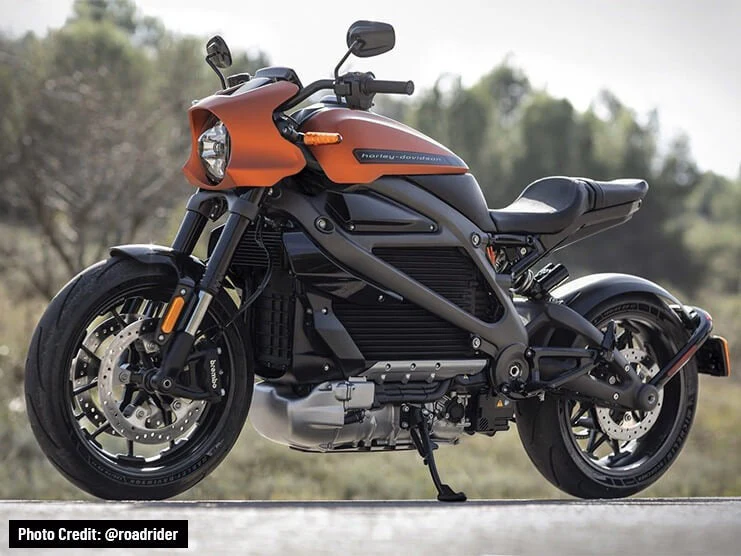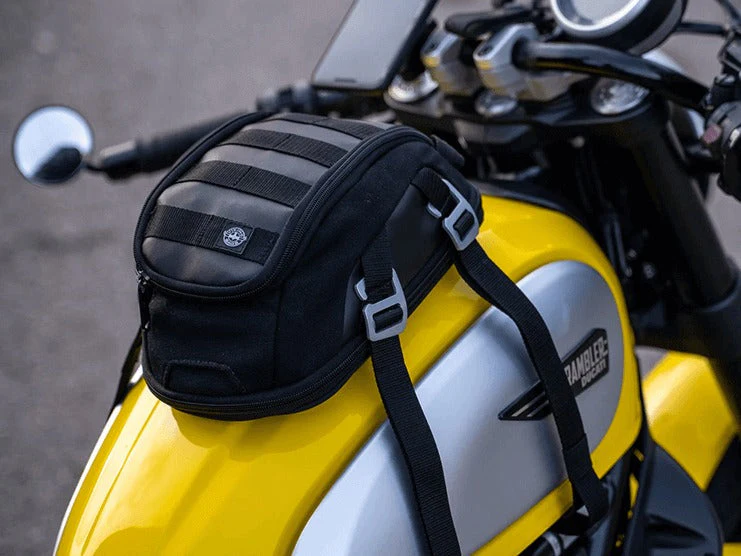When you think of American motorcycle companies, Harley Davidson is usually the first business to come to mind. Ever since it broke into the motorcycle world in 1903, Harley Davidson has been manufacturing and releasing multiple models in the Sportster, Street, Dyna, Softail, and Touring categories. In recent years, Harley Davidson has been branching out and trying to incorporate new vehicle types in their growing selection of two- and three-wheelers. One part of the motorcycle market that Harley Davidson has been trying to branch out into is the electric motorbike category.
Though electric motorcycles have existed since the early 1900s, Harley Davidson has only recently released a successful electric motorbike bearing the HD logo. The first Harley Davidson electric motorcycle was known as the Harley LiveWire, created by the company’s former electric vehicle (EV) division, LiveWire.
Table of Content
1. Brief History of the Harley Davidson LiveWire
The production of the early Harley Davidson LiveWire model, or LiveWire One, prototypes began back in June 2014. Five years later, between September and October 2019, the Harley LiveWire One was finally released to the public. Harley Davidson’s first electric motorbike received high praise from fans and critics due to its latest technology features and lightweight build deviating from the typical design of Harley models.
In July 2021, Harley Davidson established LiveWire as its EV branch to keep up with the changing motorcycle market. Though Harley Davidson has retained its popularity over the years by consistently building most of its motorcycles with a traditional look and design, the company has faced problems appealing to and gaining new followers from younger motorcyclists.
In May 2021, Harley Davidson announced that LiveWire would no longer continue working as the company’s EV division. Instead, LiveWire would be re-launched as a special purpose acquisition company (SPAC) and merge with SPAC AEA-Bridges Impact. Though still keeping ties with Harley Davidson, LiveWire will now function as its own business focused on manufacturing adventure electric bikes for city travel.
Though technically now the property of the company sharing the same name, the LiveWire One still bears the name Harley Davidson on its chassis.
2. Harley Davidson LiveWire at First Glance

The Harley Davidson LiveWire has a long streamlined frame stretching at least 84.1 inches, with the nose and fuel tank painted with a distinct color scheme and the rest of the motorcycle covered in dark gray/black. This vehicle can come in the following color schemes: vivid/liquid black, orange fuse, yellow fuse, horizon white, and nebula red.
The Harley LiveWire is powered by a heavy cylindrical Revelation powertrain attached to the bottom of the motorcycle’s bulky, box-shaped battery. The electric motor is high above the ground to avoid scraping, providing a low center of gravity that makes it easier to maintain balance and turn tight corners. The Revelation powertrain produces a steady horsepower of 100 hp and a torque of 84 ft-lbs allowing the Harley LiveWire to accelerate quickly.
The wide, upright handlebars and the mid-mounted foot controls offer an aggressive riding style that requires the rider to lean slightly forward. Built with a wheelbase of 58.7 inches and a ground clearance of 5.1 inches, the Harley LiveWire is best suited for average or taller riders.
Fitted towards the front are upright handlebars with a state-of-the-art touchscreen in the middle. The 4.3-inch digital color screen displays all the readings, gauges, and information about your motorcycle’s condition, speed, battery life, etc. The digital system also uses H-D Connect, which allows you to check your motorcycle’s condition via the Harley Davidson app. If you wish to access a GPS and play music, you can connect your phone to Bluetooth.
The Harley LiveWire is fitted with the latest technological features, including advanced safety features like a Cornering Enhanced Antilock Braking System (C-ABS), Drag-Torque Slip Control System (DSCS), and Cornering Enhanced Traction Control System (C-TCS).
The Harley LiveWire is capable of both city travel and highway cruising, able to cover varying distances with a fully charged battery. It also has a long pillion that stretches back to the elevated tail, with a passenger seat that allows for two-up riding.
3. Harley Davidson LiveWire Buyer’s Guide
3.1 How Long Does a Harley LiveWire’s Battery Last?
The Harley LiveWire’s 15.4 kWh Rechargeable Energy Storage System (RESS) runs out of charge quicker when you travel long distances on highways. How long the Harley LiveWire’s battery lasts depends on whether you frequently rely on this vehicle for intracity travel, intercity travel, or long-distance trips. For intracity travel, the battery will only last for 146 miles. For intercity travel, the battery will only last for 95 miles. For travel on long highways, the battery will only last for 70 miles.
3.2 How Long Does it Take for a Harley LiveWire to Go From 0 to 60 MPH?
The Harley LiveWire can accelerate from 0 to 60 mph in only three seconds.
3.3 How Long Does it Take to Recharge the Harley LiveWire’s Battery Fully?
The time it takes to fully recharge the Harley LiveWire’s battery varies depending on whether you frequently rely on this vehicle for intracity travel, intercity travel, or long-distance trips. For intracity and intercity travel, the battery must be connected to a 110v wall outlet for 11 hours. For long-distance trips, the battery must be connected to a DC Fast Charger for about an hour.
3.4 Is the Harley LiveWire a Good Beginner’s Bike?
Despite the Harley LiveWire being a heavyweight two-wheeler, it can be an ideal entry-level motorcycle due to the lack of shifting gears and a clutch making it easy for novice riders to understand the controls.
4. Harley Davidson LiveWire Specifications
4.1 General
| Manufacturer | Harley Davidson/LiveWire |
|---|---|
| Vehicle Type | Electric |
| Model | LiveWire One |
| Production Years | 2019-2021 |
| Touring Capability | Yes |
| Color Schemes | Vivid/Liquid Black Orange Fuse Yellow Fuse Horizon White Nebula Red |
| Base Price | Vivid Black: $29,799 Color: $30,149 |
4.2 Dimensions
| Length | 84.1 in |
|---|---|
| Seat Height | 30 in |
| Ground Clearance | 5.1 in |
| Rake | 24.5° |
| Trail | 4.3 in |
| Wheelbase | 58.7 in |
| Type of Tires | H-D/Michelin Scorcher “Sport” |
| Front Tire | 120/70 ZR17 58W |
| Rear Tire | 180/5 ZR17 73W |
| Weight | 562 lbs |
4.3 Electric & Power System
| Electric Motor | Revelation |
|---|---|
| High-Voltage Battery | 15.4 kWh Rechargeable Energy Storage System (RESS) |
| Level 1 Compatible | 13 miles per hour of charging |
| Level 2 Compatible | 13 miles per hour of charging |
| DC Fast Charge (DCFC) | 0-80% in 40 minutes 0-100% in 60 minutes |
| Lights | High Beam Turn Signals ABS Traction Control EV Fault |
| Gauges | 4.3” WQVGA 480×272 TFT Color Display with Ambient Light Sensor Nine Warning Lights Real Time Clock Integrated Bluetooth Connectivity to Smartphone to provide infotainment features, including turn-by-turn navigation, telephone, music, and voice recognition. |
4.4 Performance
| Horsepower | 100 hp |
|---|---|
| Torque | 84 ft-lb |
| Right Lean Angle | 45° |
| Left Lean Angle | 45° |
| Intracity Travel Distance | 146 miles |
| Intercity Travel Distance | 95 miles |
| Highway Travel Distance | 70 miles |
4.5 Chassis
| Front Fork | SHOWA® SFF-BP® (Separate Function Front Fork-Big Piston) |
|---|---|
| Rear Shocks | SHOWA® BFRC™ (Balanced Free Rear Cushion-lite) Mono-Shock Rear Suspension |
| Front Wheel | Black, Split 5-Spoke Cast Aluminum |
| Rear Wheel | Black, Split 5-Spoke Cast Aluminum |
| Brakes | Brembo Monoblock Front Brakes |
| Calipers | Dual Four-Piston Monoblock Radial Mount Front, Dual-Piston Rear |
5. Harley Davidson LiveWire Aftermarket Parts & Modification Options
The Harley Davidson LiveWire is unique from other Harley series due to being built with an almost entirely electrical system. Though Harley Davidson’s first electric bike is a versatile mode of transportation and comes with plenty of useful and recreational features, many riders still want to find ways to improve the Harley LiveWire’s capabilities.
Though a relatively new model on the global motorcycle market, there are Harley LiveWire aftermarket parts available that you can use to customize and install additional features that could improve handling, performance, and storage capacity. Possible replacement parts and add-ons that you can mount to your Harley LiveWire are crash bars, fairings, handlebars, luggage racks, seats, sissy bars, and sissy bar pads.












Leave a comment
All comments are moderated before being published.
This site is protected by hCaptcha and the hCaptcha Privacy Policy and Terms of Service apply.